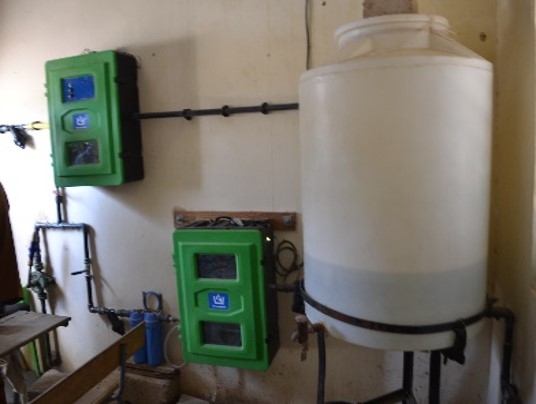Realisation period
2015-2021
Location
Communauté rurale de Nioro Alassane Tall, Senegal
Contact
Danilo Faye
Date
07.01.2022
07.01.2022
Sustainable Rainwater Management
Problem & solution
The availability of drinking water remains a problem in the department of Gossas - both for production and sanitation needs and especially for human consumption. These difficulties are linked to its quantity and/or quality. In some places, groundwater contains solutes that are not suitable for consumption, making it brackish.
Inhabitants of the region, who use the water from the borehole, were affected by illnesses linked to the poor quality of the water because it contains dissolved substances that affect human health.
The solution was to install rainwater tanks and treatment systems - ultra-violet purifiers that make rainwater fit for human consumption.

the experience
- Everything started with consultation sessions with the affected populations on the basis of a territorial diagnosis.
- A water collection system was installed on the roof of the village health centre; a storage tank for the collected water was installed with a solar pump; a purifier with ultraviolet treatment was installed to make the water potable;
- The drinking water is then sold by a water point manager, and users pay 150 CFA francs for 20 litres, i.e. 7.5 CFA francs per litre, and the price is the same for all users.
Challenges
- Putting a fence around the tanks storing water for drinking treatment for better protection against sandy winds and dust, which can seep into the cover sheets.
- The ultraviolet water purifier must be properly identified and installed by a specialist in order to deliver good quality water that has not lost its nutritive qualities.
Impact
- Several diseases that were linked to the consumption of poor water quality such as hypertension, dermatitis, rheumatism etc. have disappeared.
- Cases of patients with very high salinity levels in the blood, often leading to complications during pregnancy and even childbirth were reduced.
Lesson Learned
- Rainwater, when it meets potabilisation standards, can be a good quality drinking water in sufficient quantity when infrastructure for its collection and treatment are in place.
- Faced with a given problem, solutions must be examined in a concerted and thorough manner to provide relevant and sustainable remedies.

